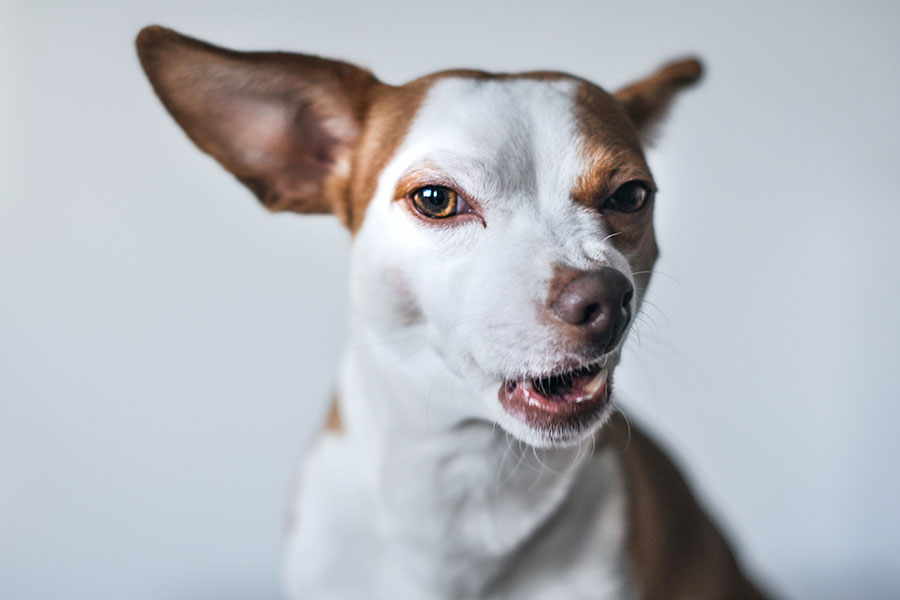
There are two causes of dog reactivity – barrier frustration and fear-based reactivity. Barrier frustration can come in the forms of being stuck in their cage, not being able to get to something on the other side of a fence or even being on their leash. Fear-based reactivity can come from overstimulation or even a dog or humans body language. Reactivity can lead to aggression – which is defined as injury to another individual (dog or human)- and this is why it is important to work with your dog and recognize their body language in order to avoid this behavior.
Tips and tricks to help your reactive dog:
- Routines
- Dogs love routines and maybe you have noticed that your dog knows certain aspects of your daily routine – for example, they might know that when you put your shoes on, you’re leaving or around their dinner time, they might start to whine to remind you. Whatever your routine is, your dog normally has some idea of what comes next in the day. Having a routine for your dog not only reduces their anxiety but can also makes them feel more safe and comfortable in the outside world.
- Equipment
- There are a ton of tools one can use with their reactive dog to help reduce their reactivity. Certain tools like a gentle leader collar which is one collar that fits around your dogs neck and their snout. This type of collar helps you to redirect your dog’s attention away from their triggers by gently pulling their head away from the thing that is triggering them. Another tool that can help is a easy walk harness. I have used these harnesses and they work very well. An easy walk harness allows for the leash to be clipped on the front of the harness by their chest. This location of the leash makes it extremely difficult for your dog to pull on the leash and when they do, the dog ends up turning themselves around because the leash is in such an awkward position.
- Counter conditioning
- Counter conditioning is creating positive associations for a dog when a trigger is present. The most important thing to remember when doing this is rewarding or positively reinforcing them before their behavior responds to the trigger but after the dog notices it. For example, if your dog is looking out the window and they are typically reactive to people walking by, give the dog a treat as soon as they look alert and notice the people walking by but do it before they start to bark.
- Body language
- Dogs communicate to humans and other dogs primarily through their body language. Learning to read their body language is a good first step when you own a dog. Once you learn the warning signs from your dog about when they are fearful or about to be reactive can really help to prevent reactivity before it even happens. When a dog is about to be reactive, their body language will be very tense and stiff. To read more about dog body language, check out my other blog post titled “What does your dogs body language say about them?“
- Training
- To avoid reactivity, one of the best ways is to take your dog to training. With reactive dogs, basic training won’t do the trick. There are plenty of trainers that specialize in reactive dogs and know exactly what can and needs to be done in order to help your dog with these issues. If you have a reactive dog, I would strongly suggest considering this idea.
References:
- http://www.ispeakdog.org/dog-reactivity.html
- https://wagsandwiggles.com/6-ways-to-calm-your-reactive-dog/
March 15, 2022 at 1:26 am
Putting a harness on my dog was one of the most difficult yet hilarious things to do.
March 15, 2022 at 2:43 pm
My boyfriend and I just moved into a new house. We have a great pyraneese/german shepard mix so naturally, he’s a guard dog. Since moving, we’ve noticed he’s gotten much more reactive than he used to be. Unsure of why that is, but it’s getting to a point where I’ve been trying to do some training. This blog couldn’t have come at a more perfect time! Hoping to try out these tips to get him to stop barking at every passerby!
March 17, 2022 at 5:43 pm
I have three dogs and they are all so different. This post really helped me to think of how different they really are and what things help them stay relaxed. I really enjoyed this post and can’t wait to read the rest of the semester.